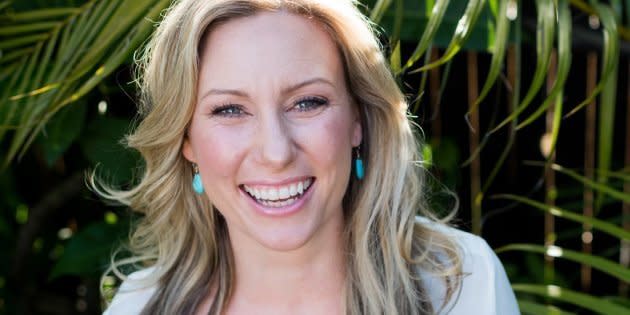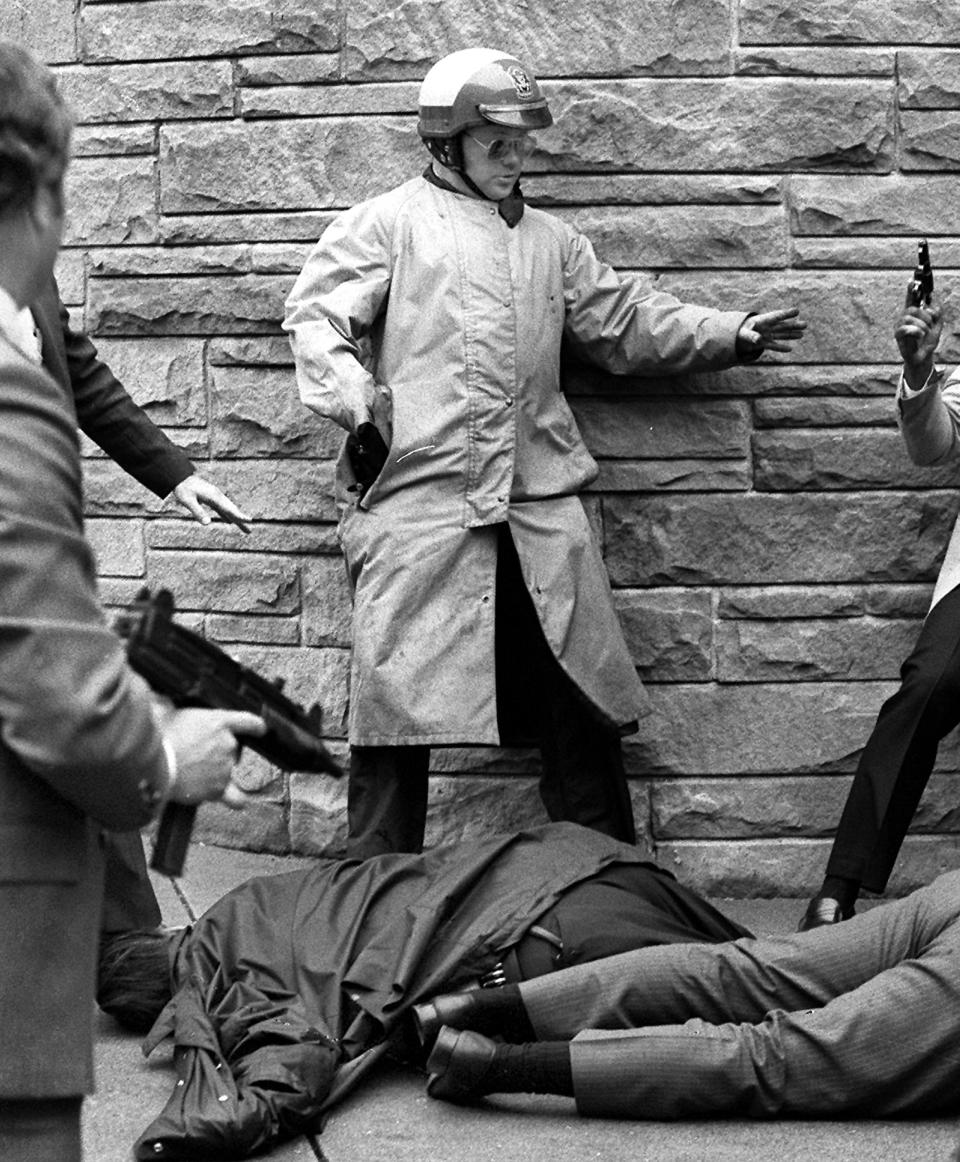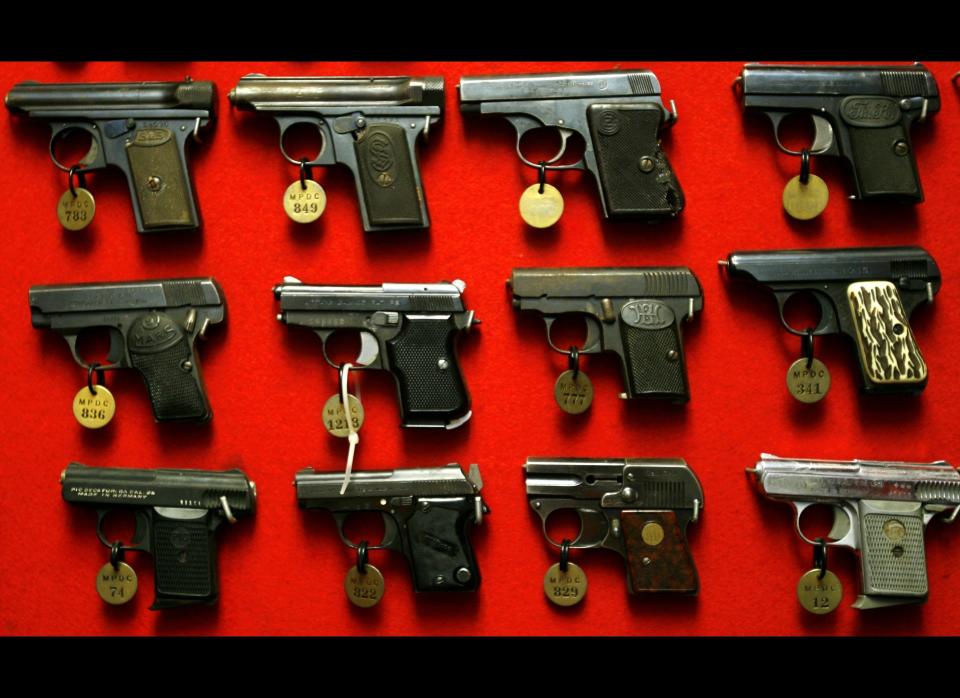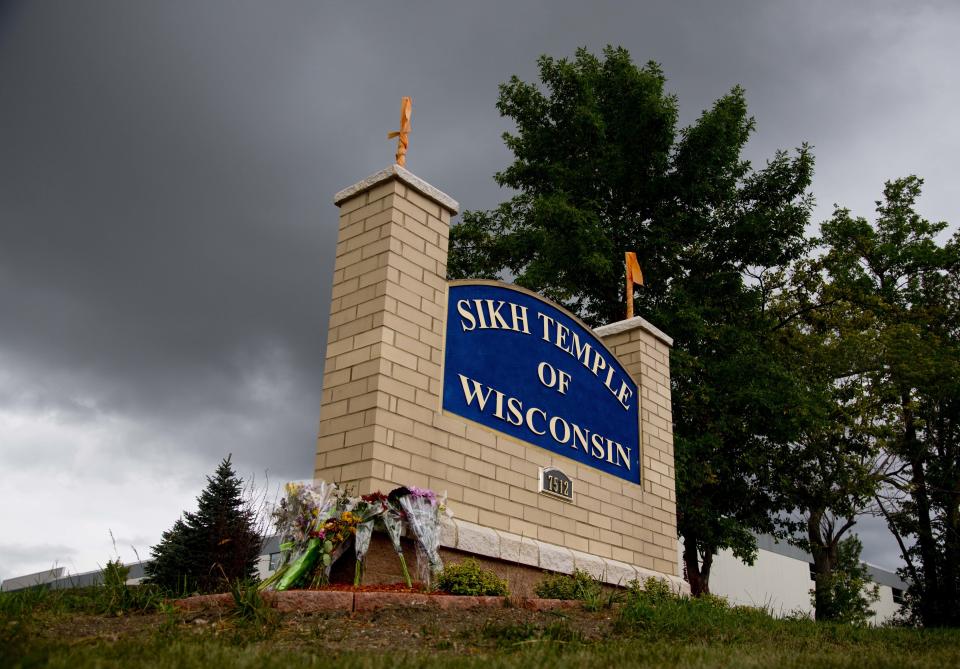Report: Australian Woman Was Shot By Minneapolis Cop As She Talked To His Partner
A Minnesota man and his family are searching for answers after his Australian fiancée was fatally shot Saturday night by a Minneapolis police officer who responded to her 911 call for assistance.
The officer reportedly fired at the pajama-clad victim from inside a police cruiser while she addressed his partner through the driver’s window.
Justine Ruszczyk, 40, was killed after she called 911 to report what she thought was a possible assault on her street, her fiancé confirmed Monday.
It appears she most frequently went by the name Justine Damond, even though she was not yet legally married to fiancé Don Damond, 50. The couple had planned to get married in August, according to the Minneapolis Star Tribune.
Shown below are Justine Damond, Don Damond and Don’s son Zach Damond.
Don Damond mourned the loss of his fiancée in a statement Monday afternoon and criticized the police for not being more forthcoming with information surrounding her death.
“Our hearts are broken and we’re utterly devastated by the loss of Justine,” he said, describing his fiancee as “a teacher to so many in living a life of openness, love and kindness.”
“She was so kind and so darned funny,” Damond said while holding back tears. “We’re desperate for information. Piecing together Justine’s last moments before the homicide would be a small comfort.”
The Hennepin County Medical Examiner announced Monday that Justine Damond died of a gunshot wound to the abdomen and described her death as a homicide.
Australia’s Department of Foreign Affairs and Trade said it would provide consular assistance to the victim’s family, and released a brief statement on behalf of relatives.
“This is a very difficult time for our family,” the statement says. “We are trying to come to terms with this tragedy and to understand why this has happened.”
Justine Damond’s father, John Ruszczyk, addressed her death in a statement to Australian media on Tuesday.
“We thought yesterday was our worst nightmare, but we awoke to the ugly truth and it hurt even more,” he said. “Justine was a beacon to all of us, we only ask that the light of justice shine down on the circumstances of her death.”
"We only ask that the light of justice shine down on the circumstances of her death" - John Ruszczyk - Father of Justine Ruszczyk-Damond. pic.twitter.com/ZBjd9pGgkX
— 7 News Sydney (@7NewsSydney) July 18, 2017
Zach Damond, 22, who identified himself as the slain woman’s future stepson, said in a video posted to Facebook that she was killed after calling 911 to report a sound in the alley behind her home.
Justine Damond went outside in her pajamas to talk to the officers when they arrived to investigate about 11:30 p.m. She was reportedly speaking to police from outside the driver’s door when the officer in the passenger seat pulled his gun and shot through the driver’s side door, striking Damond, sources familiar with the incident told the Star Tribune. No weapon was found at the scene.
The officer who fired has been identified as Mohammed Noor, the first Somali-American officer to join the Minneapolis Police Department’s 5th Precinct team, according to local CBS affiliate WCCO.
City records show Noor had three complaints on file, according to local ABC affiliate KSTP. One complaint against him was dismissed with no disciplinary action, though two remain open.
“Officer Noor extends his condolences to the family and anyone else who has been touched by this event,” Tom Plunkett, Noor’s attorney, said in a statement Monday. “He came to the United States at a young age and is thankful to have had so many opportunities. He takes these events very seriously because, for him, being a police officer is a calling.”
“The current environment for police is difficult, but Officer Noor accepts this as part of his calling,” the statement continued.
Statement from @ChiefHarteau Regarding Officer Involved Shooting pic.twitter.com/9FHNAckoHh
— Minneapolis Police (@MinneapolisPD) July 17, 2017
Zach Damond reacted to the incident in a video posted to the Facebook page for Women’s March Minnesota.
“Basically my mom’s dead because a police officer shot her for reasons I don’t know,” he says in the video. “I demand answers. If anybody can help, just call police and demand answers. I’m so done with all this violence.”
Love HuffPost? Become a founding member of HuffPost Plus today.
Minneapolis police faced intense pressure after authorities admitted there was no video footage from the officers’ body cameras.
The state Bureau of Criminal Apprehension, which was leading the investigation, said body cameras worn by the officers were “not turned on at the time and the squad camera did not capture the incident.” The agency said it was seeking any other video that may have been taken.
Since 2016, Minneapolis has required all officers to wear and activate body cameras “at all times when they could reasonably anticipate that they may become involved in a situation for which activation is appropriate.”
The Bureau of Criminal Apprehension “will provide additional details of the incident once initial interviews with the officers are complete,” the agency said in a statement Monday. “Those interviews have been requested by BCA agents. The officers are working with their attorneys to schedule them.”
Minneapolis Mayor Betsy Hodges said she had “questions about why the bodycams weren’t on” and was “heartsick and deeply disturbed by what occurred.”
“There are still many questions about what took place, and while the investigation is still in its early stages, I am asking the BCA to release as much information, as quickly as they are able to,” Hodges said in a statement.
Both officers involved in the shooting were placed on paid administrative leave, the Star Tribune reported.

Justine Damond, who had lived in Minneapolis for roughly three years, was a trained yoga teacher and worked as a motivational speaker and life coach, according to her personal website.
She grew up in Sydney, and completed a degree in veterinary science at the University of Sydney in 2002 before moving to the U.S., according to her LinkedIn profile.
Jo Grabyn, a friend and fellow Australian, told HuffPost on Monday that she was “in shock and totally confused” about the circumstances surrounding her friend’s death.
“She was such a shining light in so many ways,” Grabyn, 42, said. “She leaves a gaping hole in so many lives. [She] deserved three lifetimes, not less than half of one.”
The Lake Harriet Spiritual Community Center, where Justine Damond gave weekly talks on meditation, said in a statement to HuffPost that she preached and practiced “love and peace and non-violence.”
“She inspired us with example of how she chose to live her life,” the center said. “While this is a tragic event, Justine would want us to use this opportunity to develop greater love and compassion for each other, and look to find solutions by thinking differently.”
A neighbor reportedly told reporters the victim was critical of lenient American gun laws, compared with those in Australia.
Following a shooting rampage that left 35 people dead in 1996, Australia passed anti-gun violence measures that introduced lengthy background checks and required all firearms to be registered to a licensed owner and stored under strict conditions, separate from ammunition.
Australia, like countries such as Germany and New Zealand, has encouraged citizens traveling to the U.S. to be aware of high levels of gun violence. The country’s foreign affairs department website warns travelers to “be vigilant about possibility of gun crime in all parts” of the U.S.
The Minneapolis-St. Paul metropolitan area was rocked by another police shooting last year, when a St. Anthony officer fatally shot Philando Castile in a St. Paul suburb just miles from the scene of Saturday night’s killing. An officer was charged in the death of Castile, who was black, but was acquitted last month. He has since left the St. Anthony police force.
This article has been updated to include additional details about the victim.
Ryan Grenoble and Nick Wing contributed reporting.
CORRECTION: A previous version misstated Zach Damond’s relationship to Justine Damond. Language has also been changed to indicate that while Castile was killed by a St. Anthony police officer, the incident occurred in Falcon Heights.
Also on HuffPost
1981: The Attempted Assassination Of President Ronald Reagan

1993: The Brady Handgun Violence Act

1994: The Violent Crime Control and Law Enforcement Act

2004: Law Banning Magazines Holding More Than Ten Rounds Of Ammunition Expires

2007: The U.S. Court of Appeals For The District Of Columbia Rules In Favor Of Dick Heller

2008: Supreme Court Strikes Down D.C. Handgun Ban As Unconstitutional

Gabrielle Giffords And Trayvon Martin Shootings

Colorado Movie Theater Shooting

Sikh Temple Shooting

This article originally appeared on HuffPost.

